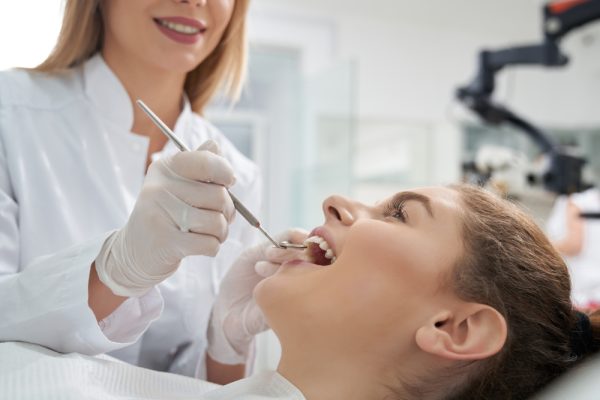Essential Dental Bridge Maintenance Tips
Dental bridges are an effective solution for replacing missing teeth, restoring your smile, and improving your oral health. However, like any dental restoration, they require proper care and maintenance to ensure their longevity and functionality.
Table of Contents
Our Seattle dentists want to ensure that your dental bridge lasts as long as possible. We’ve created a guide that helps you better understand how to care for your dental bridge. We provide personalized dental care to Seattle’s diverse neighborhoods, including Green Lake, Ballard, Fremont, Pike/Pine, Bellevue, Mercer Island, Belltown, and more.

Caring for Your Dental Bridge
When it comes to caring for your new dental bridge, there are a few essential things to keep in mind:
- Good Oral Hygiene: Brush your teeth at least twice a day using fluoride toothpaste. Make sure to clean the areas under and around your bridge. Use floss or interdental brushes to clean spaces between your teeth. A floss threader or super floss can help clean under the bridge.
- Regular Dental Check-ups: Visit our dentist in Seattle regularly for check-ups and professional cleanings. This will allow early detection of any problems and keep your bridge and surrounding teeth healthy.
- Watch What You Eat: Sticky or hard foods can harm your bridge. Limit consumption of foods like hard candy, caramel, and nuts.
- Use Mouthwash: An antiseptic mouthwash can help reduce bacteria in the mouth, helping prevent gum disease and decay.
- Protect Your Teeth: If you grind or clench your teeth, ask our dentist about a night guard to protect both your natural teeth and the bridge.
- Avoid Smoking and Excessive Alcohol: Both can lead to gum disease, which can weaken the foundation (the teeth or dental implants) that supports your bridge.
- Maintain a Healthy Diet: A balanced diet helps provide the necessary nutrients for optimum gum health and supports the teeth holding the bridge.
- Check for Looseness: If your bridge becomes loose or you feel any discomfort, see our dentist immediately. Don’t try to adjust or fix it yourself.
- Fluoride Treatment: Depending on your risk for cavities, our dentist may recommend a fluoride gel or mouth rinse.
- Antibacterial Gel: In some cases, our dentist might recommend the use of an antibacterial gel under the bridge to reduce bacteria and food accumulation.

Signs of Wear and Tear
Regular monitoring of your dental bridges is crucial to identify signs of wear and tear early on. Common indications that your dental bridge may require attention include:
- Loose or shifting bridge: If your dental bridge feels loose or shifts when you bite or chew, it may indicate that the cement holding it in place has worn off or that there’s an issue with the underlying teeth or implants.
- Discomfort or pain: Sensitivity, pain, or discomfort while eating or biting down can be a sign of a problem with your dental bridge. It could be due to an ill-fitting bridge, decay underneath the bridge, or gum inflammation.
- Visible damage: Inspect your dental bridge for any visible signs of damage, such as cracks, chips, or fractures. Damaged areas can harbor bacteria and lead to further complications if left untreated.
- Gum inflammation: If you notice redness, swelling, or bleeding around the gum area adjacent to the dental bridge, it may indicate gum disease or an infection. Prompt attention is necessary to prevent further damage to your bridge and oral health.
Replacing Dental Bridges
While dental bridges are durable, they may eventually require replacement due to wear and tear or changes in your dental condition.
Consultation
Schedule an appointment with our Seattle dentist to assess the condition of your existing dental bridge and discuss your concerns. He’ll evaluate your oral health, examine the bridge, and determine if replacement is necessary.
Preparation
If replacement is recommended, the dentist will prepare the supporting teeth or implants by removing the existing bridge. In some cases, additional procedures, such as root canal treatment or implant placement, may be required to ensure optimal support for the new bridge.
Impressions
Impressions of your teeth and the surrounding area will be taken to create a custom-made dental bridge that matches your natural teeth in shape, size, and color. These impressions will be sent to a dental laboratory for fabrication.
Temporary Bridge
While waiting for the permanent bridge to be fabricated, a temporary bridge may be placed to protect your teeth and maintain aesthetics.
Final placement
Once the new bridge is ready, it will be tested for fit, aesthetics, and functionality. Our dentist will ensure that the bridge fits comfortably, aligns properly with your bite, and blends seamlessly with your natural teeth. Once everything is confirmed, the new bridge will be cemented or secured in place.

Frequently Asked Questions
It’s essential to clean under and around your dental bridge every day. Just like with natural teeth, bacteria and food particles can accumulate around the bridge, leading to gum disease or tooth decay in the adjacent teeth. Using specialized floss, such as super floss or a floss threader, can help you effectively clean these areas.
Yes, you can use a regular toothbrush to clean your dental bridge. However, consider using a soft-bristled toothbrush to avoid scratching the surface of the bridge. Some people also find an electric toothbrush effective in maintaining oral hygiene when they have dental restorations.
Dental bridges, especially those made from porcelain, can resist stains better than natural teeth. However, the bonding agents or the cement used to attach the bridge can discolor over time. It’s a good idea to rinse your mouth or brush your teeth after consuming staining foods or beverages to minimize the risk.
Maintain Your Beautiful Smile for Years to Come
Proper maintenance and timely replacement of dental bridges are essential for maintaining oral health and preserving the longevity of your restoration. By staying vigilant and addressing any signs of wear and tear promptly, you can avoid further complications and ensure the success of your dental bridge. Remember to maintain good oral hygiene practices, visit our Seattle dental office regularly, and follow their recommendations for optimal bridge care.
Contact our Seattle dentists today at (206) 682-3888 to learn more about how to properly take care of your dental bridges. Schedule your appointment today and experience top-notch dental care. We serve patients from Queen Anne, West Seattle, Mercer Island, and North Beacon Hill!
